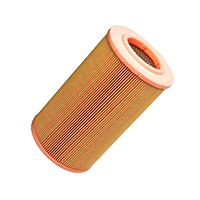Canalsman
Full Member
- Posts
- 5,484
- Likes
- 6,175
My 2007 Ducato recently failed MOT due to excessive emissions. This caused me to look into how this part of the test is conducted and how measurements are taken. It proved rather confusing but this is what I established.
There are many steps to the procedure but there are two that set the parameters to establish if the vehicle passes or fails.
Firstly the emission level to be tested must be established. In most cases the vehicle manufacturer attaches a plate, probably on the slam panel under the bonnet, with the test value inscribed. In my case it is shown as 1.54, though I don't know what the unit of measurement is. Apparently it is an opacity measurement.
Secondly, with the engine at normal operating temperature, the tester revs the poor engine's nuts off to take an opacity reading. If the value recorded is equal to or less than the manufacturer's value, the emissions test is passed immediately with what is termed a 'Fast Pass'.
If this value is exceeded there then follow 6 runs up to the rev limiter and an average of the three best results is taken to establish if the manufacturer's value is matched or bettered. If not it's a FAIL.
In my case the averaged value was around 2.3 so it failed by a considerable margin.
I was advised to do the much quoted 'Italian tune-up' and try again.
In addition to this I filled the tank with VPower diesel before the test was done again. With this fuel I performed the 'Italian tune-up' by revving the engine whilst driving to the limiter quite a few times. This achieved two things. First off, the first two or three times huge quantities of soot were ejected from the exhaust. Second it it ensured the entire exhaust system was very hot prior to the retest.
A huge difference was the result.
It passed with a 'Fast Pass' and an opacity value of 0.37! Way, way under the 1.54 limit.
So if you're approaching an MOT with your diesel it may pay you to do what I did. It's worth noting that revving the engine under load on the road is less stressful for the engine than revving it under no load when the test is conducted.
There are many steps to the procedure but there are two that set the parameters to establish if the vehicle passes or fails.
Firstly the emission level to be tested must be established. In most cases the vehicle manufacturer attaches a plate, probably on the slam panel under the bonnet, with the test value inscribed. In my case it is shown as 1.54, though I don't know what the unit of measurement is. Apparently it is an opacity measurement.
Secondly, with the engine at normal operating temperature, the tester revs the poor engine's nuts off to take an opacity reading. If the value recorded is equal to or less than the manufacturer's value, the emissions test is passed immediately with what is termed a 'Fast Pass'.
If this value is exceeded there then follow 6 runs up to the rev limiter and an average of the three best results is taken to establish if the manufacturer's value is matched or bettered. If not it's a FAIL.
In my case the averaged value was around 2.3 so it failed by a considerable margin.
I was advised to do the much quoted 'Italian tune-up' and try again.
In addition to this I filled the tank with VPower diesel before the test was done again. With this fuel I performed the 'Italian tune-up' by revving the engine whilst driving to the limiter quite a few times. This achieved two things. First off, the first two or three times huge quantities of soot were ejected from the exhaust. Second it it ensured the entire exhaust system was very hot prior to the retest.
A huge difference was the result.
It passed with a 'Fast Pass' and an opacity value of 0.37! Way, way under the 1.54 limit.
So if you're approaching an MOT with your diesel it may pay you to do what I did. It's worth noting that revving the engine under load on the road is less stressful for the engine than revving it under no load when the test is conducted.

